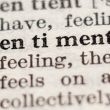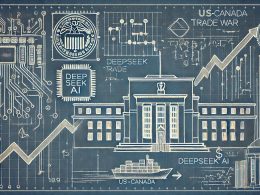by Peter Tchir, TF Market Advisors
A Confused Start to the Day, Month, Quarter
S&P futures have already traded in an almost 1% range today. Weakness in Asia overnight, caused in part by weak data, was reversed on the European open, in part on weak data.
You can’t make this stuff up, but the battle between weak data, mediocre earnings, downbeat guidance, and the forces of various forms of QE and stimulus continues.
Spain, no real plans to fix the banks
I found the bank stress tests to be worse than underwhelming. They appear to have been “goal seeked” with everything done to come out with an “acceptable” answer, rather than the “correct” answer. Since I don’t believe the economies can experience a significant turnaround without strong banks, the attempt to pretend undercapitalized banks are adequately capitalized is a clear signal Spain is intent on heading down the Greek path.
France, the guilty kid in the corner hoping not to be noticed
While we wonder whether Rajoy will ask for a bailout and wonder what terms he will be offered, we can also start wondering what France is up to. France has been noticeably quiet, avoiding the spotlight. Maybe France has been hoping no one will turn their attention on France, because the situation may be that they have more in common with Spain and Italy than Germany?
It is a little off the radar screen, and hasn’t reached even the buzz stage, but there is a murmur out there about growing problems in France. Clearly any loss in faith in French debt is either the kiss of death for the Euro or full on debt monetization that would make even Bernanke blush.
QE3, like water filling a dam
So much talk about where the QE3 money will wind up. How much can QE push up asset prices? I think in the near term, the effect is limited, but will result in one heck of a rally at some point.
In an ideal world, the money would flow from the Fed’s hose and flood across asset classes. A chain reaction of ever increasing risk taking would take asset prices up across the board, gradually.
I don’t think that is what we will get. The Fed has just turned on the hose, and first it has to fill the dam, which, once it burst will create a wave of buying, but in an uncontrolled fashion.
The dam needs to be filled because many investors put on aggressive positions ahead of the Fed announcement. So a portion of the initial Fed money goes to the “winners” who can use it to dial back risk to a more normal level.
Then, the agencies themselves, Fannie and Freddie, are decreasing their on balance sheet holdings, so some portion of the initial wave of purchases just tops this up.
Then there is the treasury itself. With the government racking up a massive deficit, there is no shortage of supply of new bonds. Maybe treasuries are less risky than mortgages, but some Fed money will find its way to treasuries to meet that supply.
A few imbalances need to be corrected before all of the Fed buying becomes incremental rather than replacement.
At the same time, the risk-on/risk-off trade can drive flows in the short term. If Europe enters another weak phase, which I expect, then markets will go into risk-off mode again. Investors won’t be tempted to put newly created money to work in stocks, they will buy t-bills. We have seen over and over again for the past 5 years, that liquidity by itself doesn’t create demand for risky assets. If investors have no faith in a risky asset, they won’t buy it, regardless of how much liquidity is pumped in.
That will be when the dam fills. The Fed pumps liquidity into the system that just collects. Then, when the risk-on mode becomes in favor, the amount of pent up demand will be astronomical because not only will we have the regular supply/demand of normal markets, but now all this money that was created will also join the chase for returns.
That is how I see QE playing out.
Institutions think retail likes fixed income more than retail
One of the growing disconnects I see is the number of institutional investors who see continued aggressive buying of fixed income by retail as a reason to own fixed income versus the amount of retail flows. Retail doesn’t hate fixed income, but after years of catching up, they are getting closer to normalized allocations to fixed income. Their portfolios are becoming balanced, but that does mean they are running out of new allocations to fixed income. I see the disconnect of many institutions loading up on bonds in complete faith that retail will be there to buy them as a real risk to the bond market. Shares outstanding on the big ETF’s have been stable for the past week or so. Given the Fed’s QE announcement, there was a compelling reason to see growth, since we didn’t, you have to assume that either the love affair is over or that the investors are tapped out. I lean more towards the latter with a touch of the former.
Earnings
Why bother? People should bother, and ultimately will bother, and maybe that will be the catalyst to spark a bigger move – likely down, but for now we are back to a Central Bank, Central Plan, Spanish Bailout, driven market. Even the Fiscal Cliff has trouble getting attention as an issue, with so much noise about government programs.
I remain bearish here. It is a bet against central bank action and the effectiveness of that action.
Copyright © TF Market Advisors











